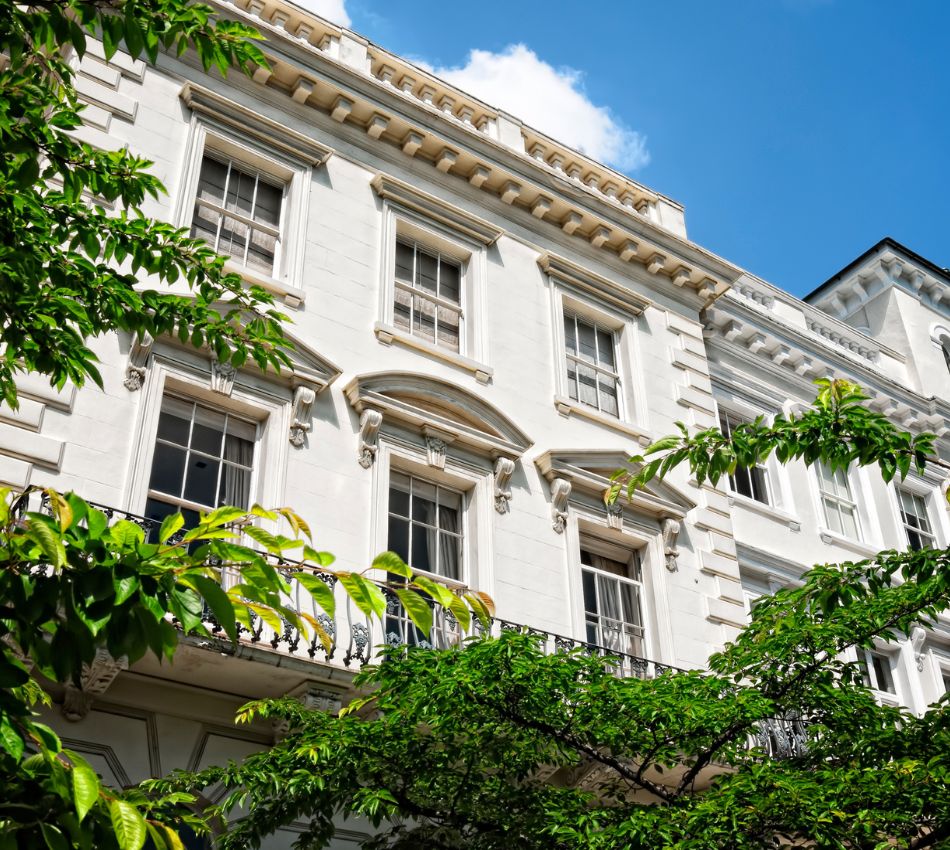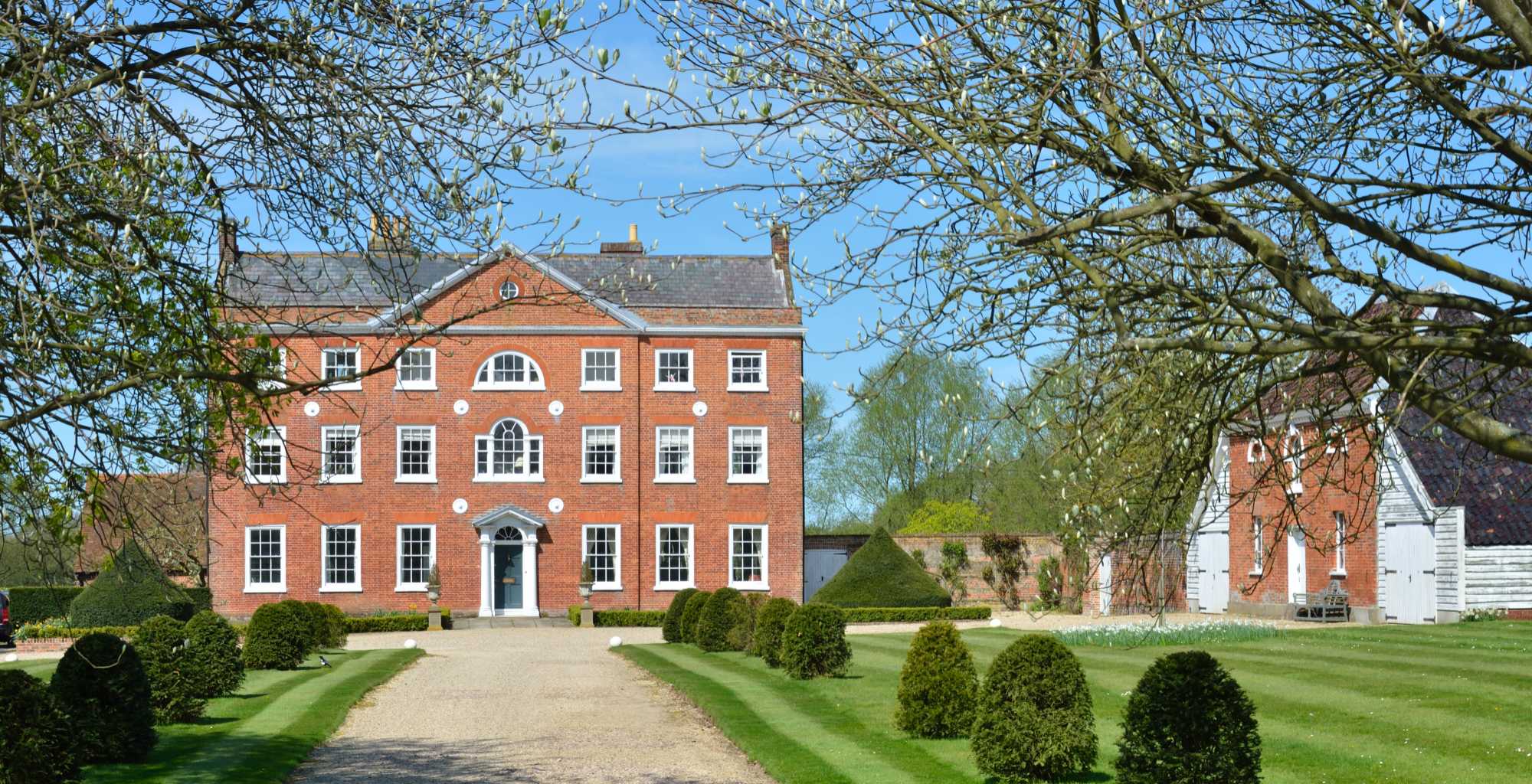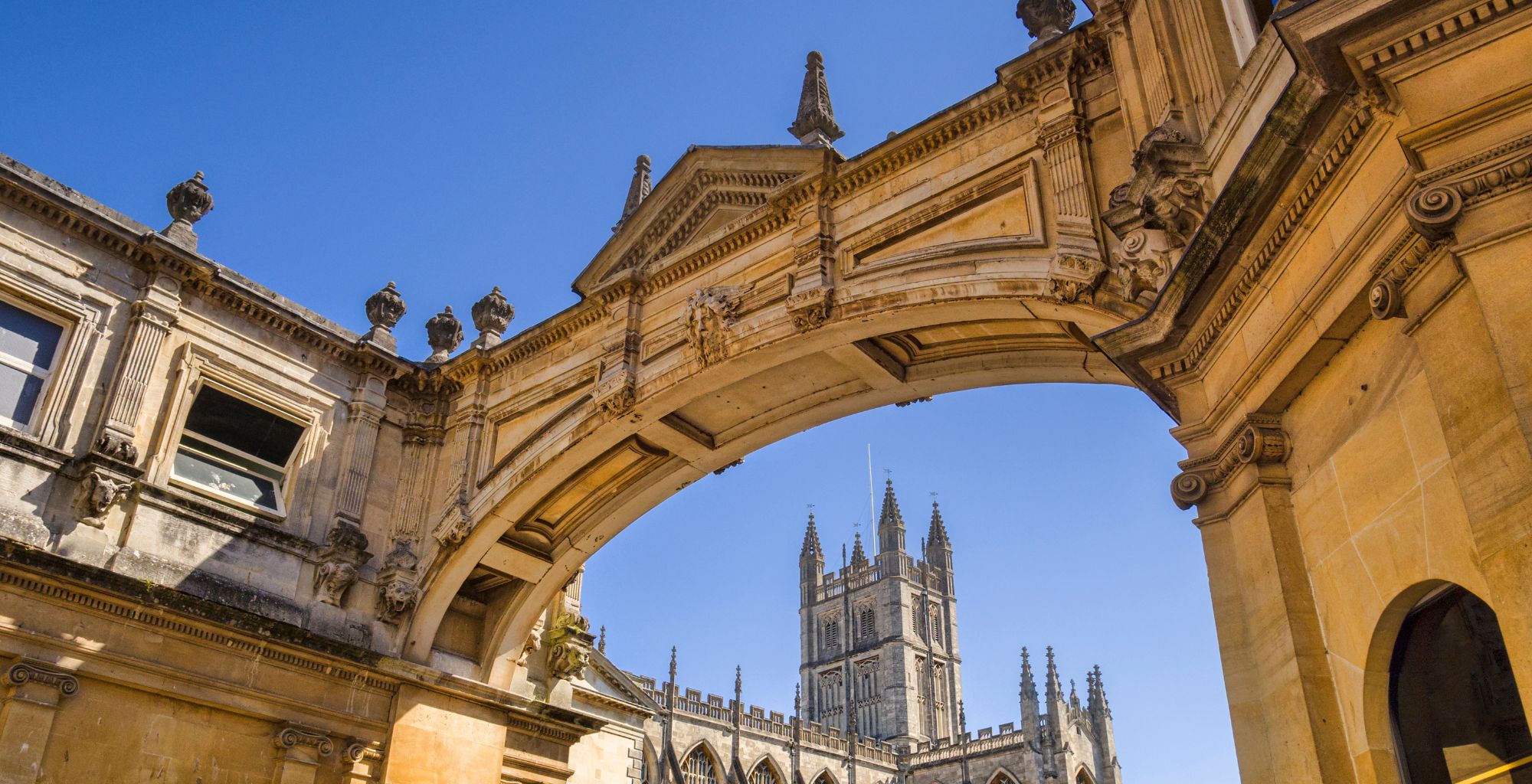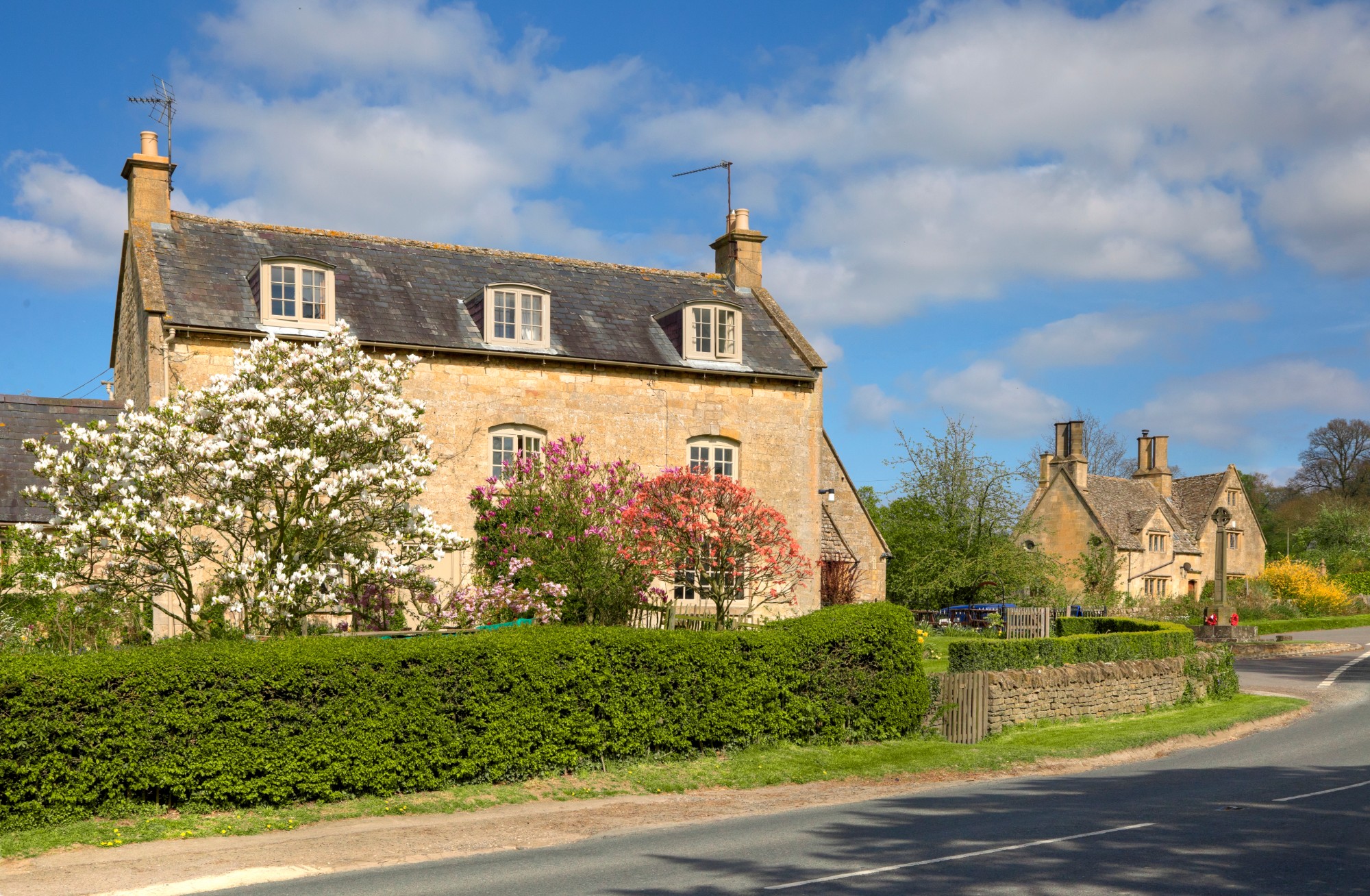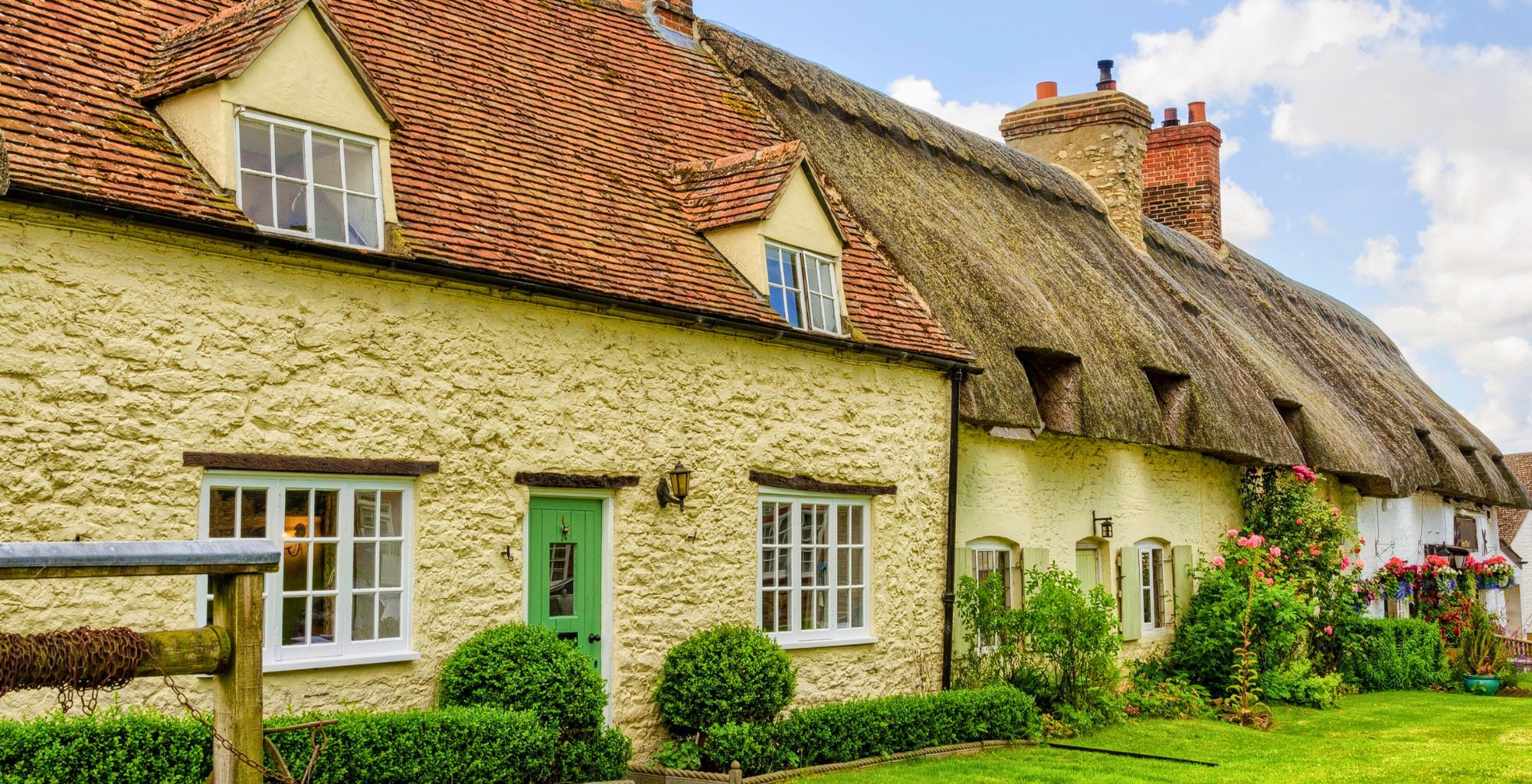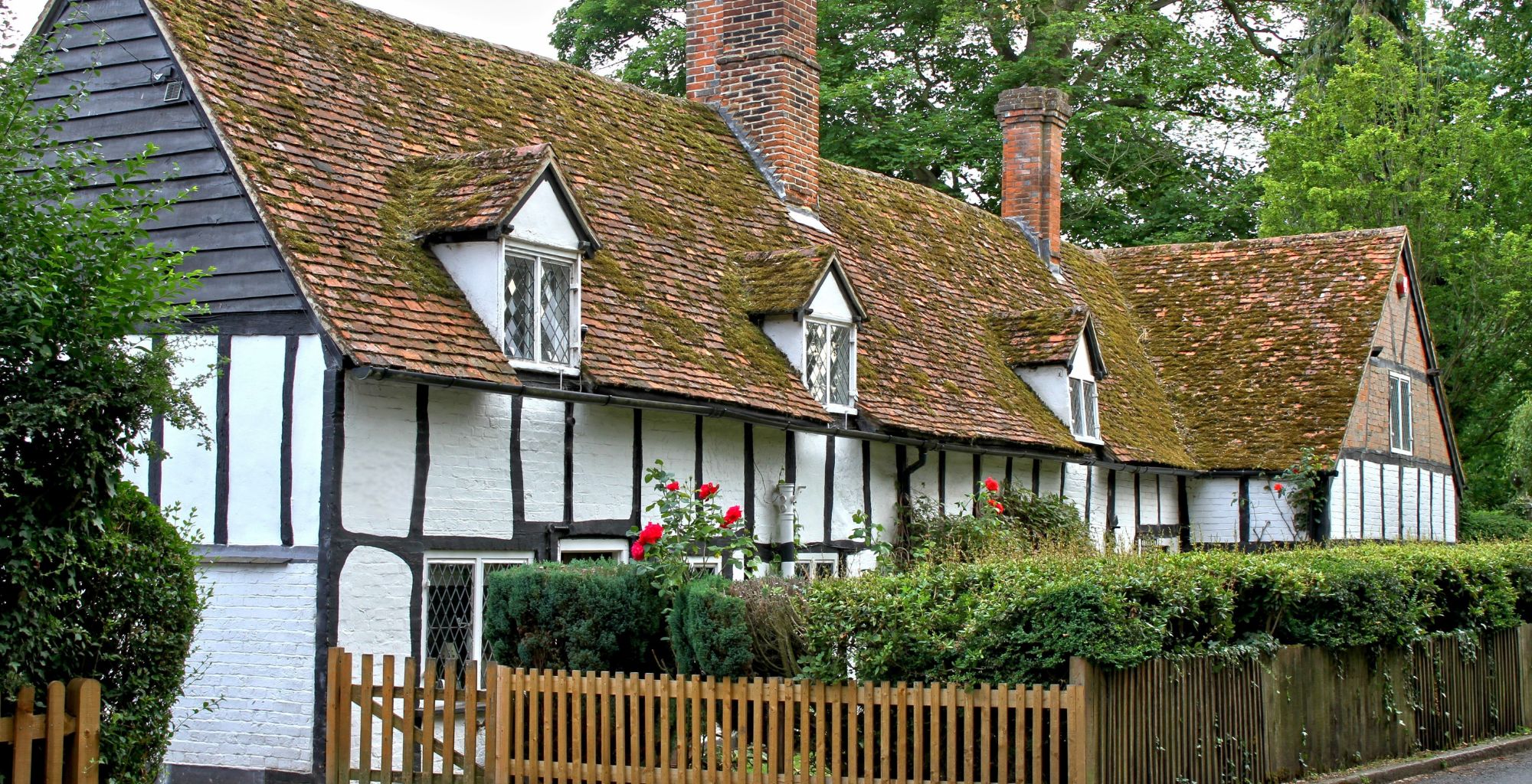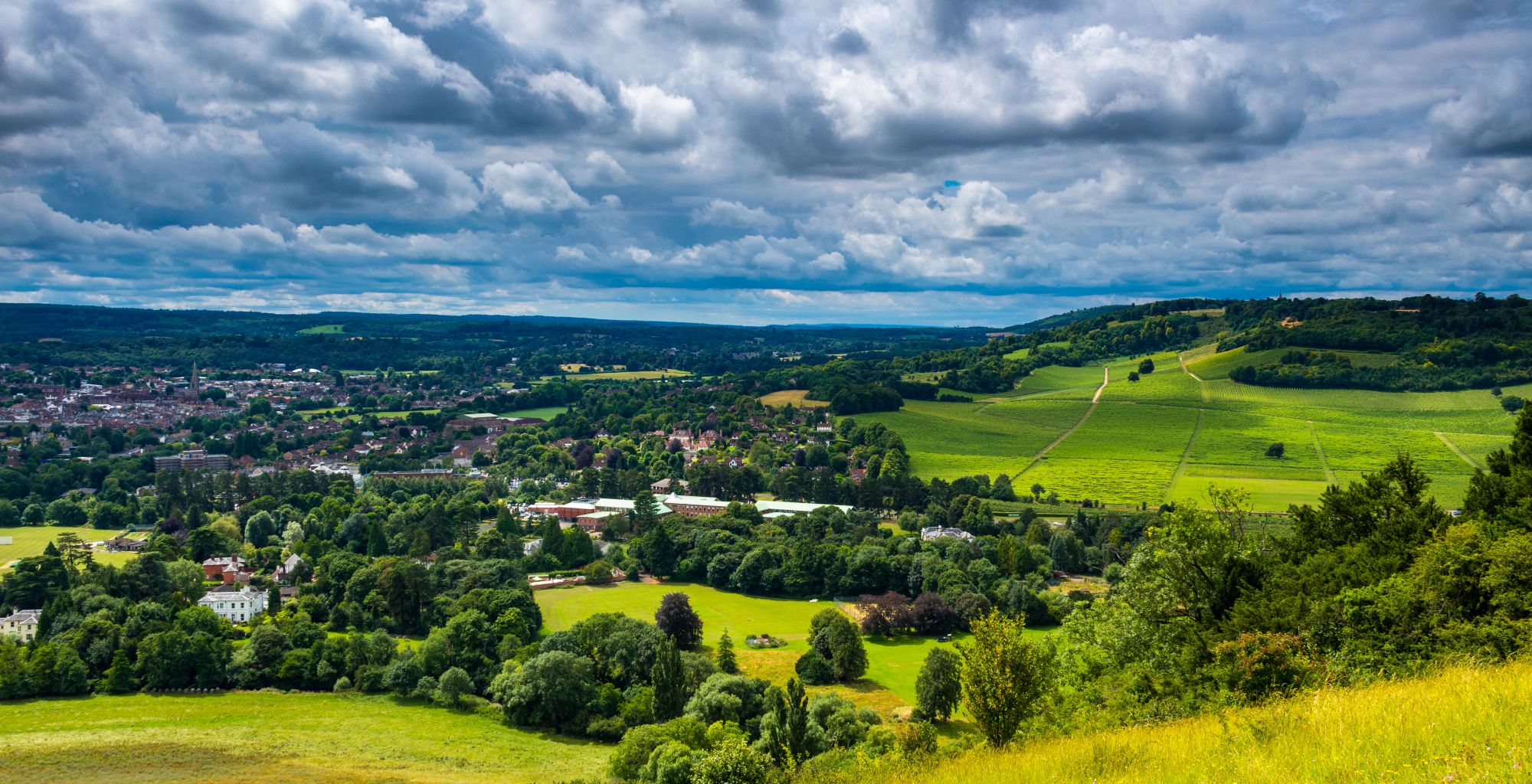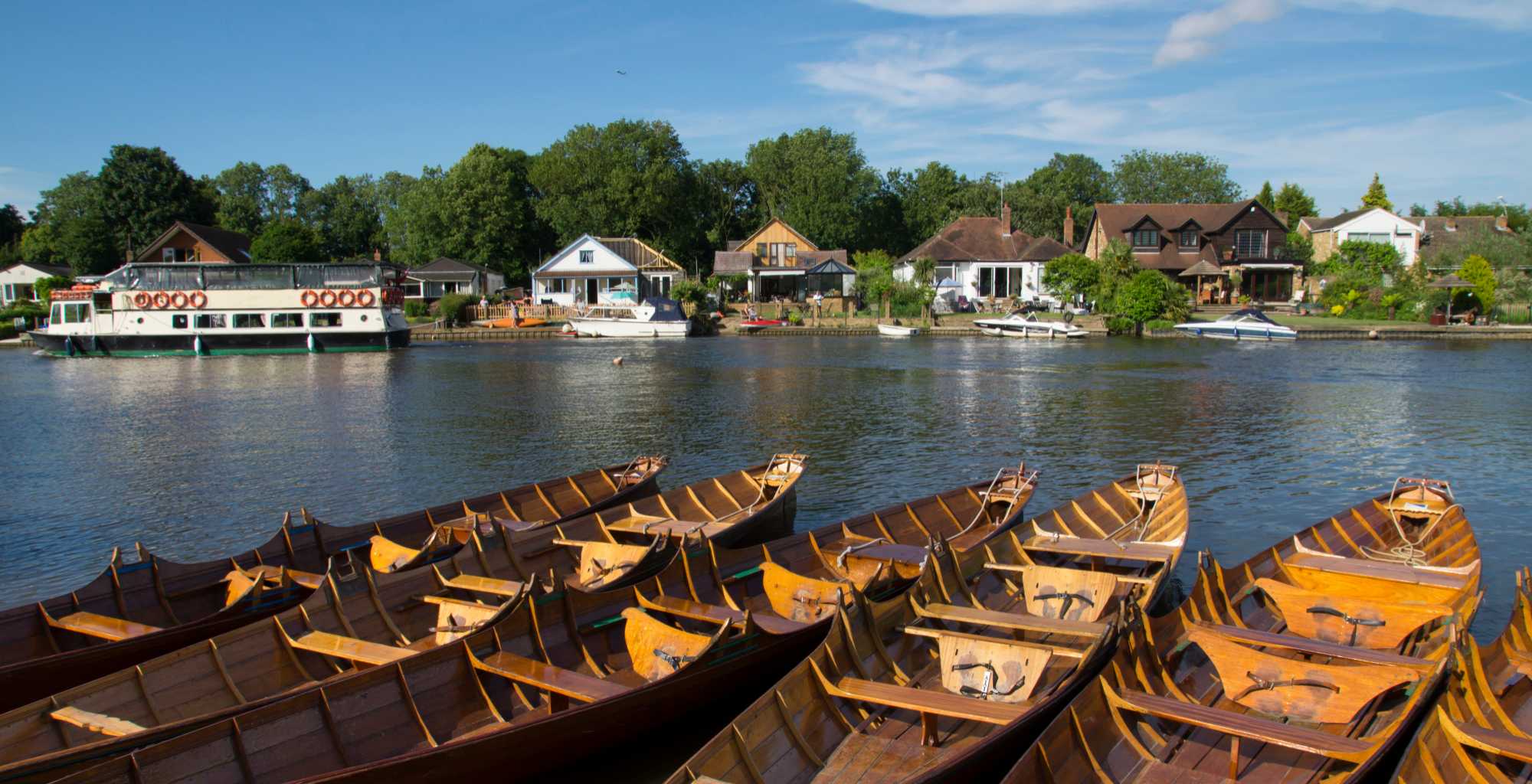Are you looking for the best places to live in Oxfordshire to focus your property search? From bustling market...
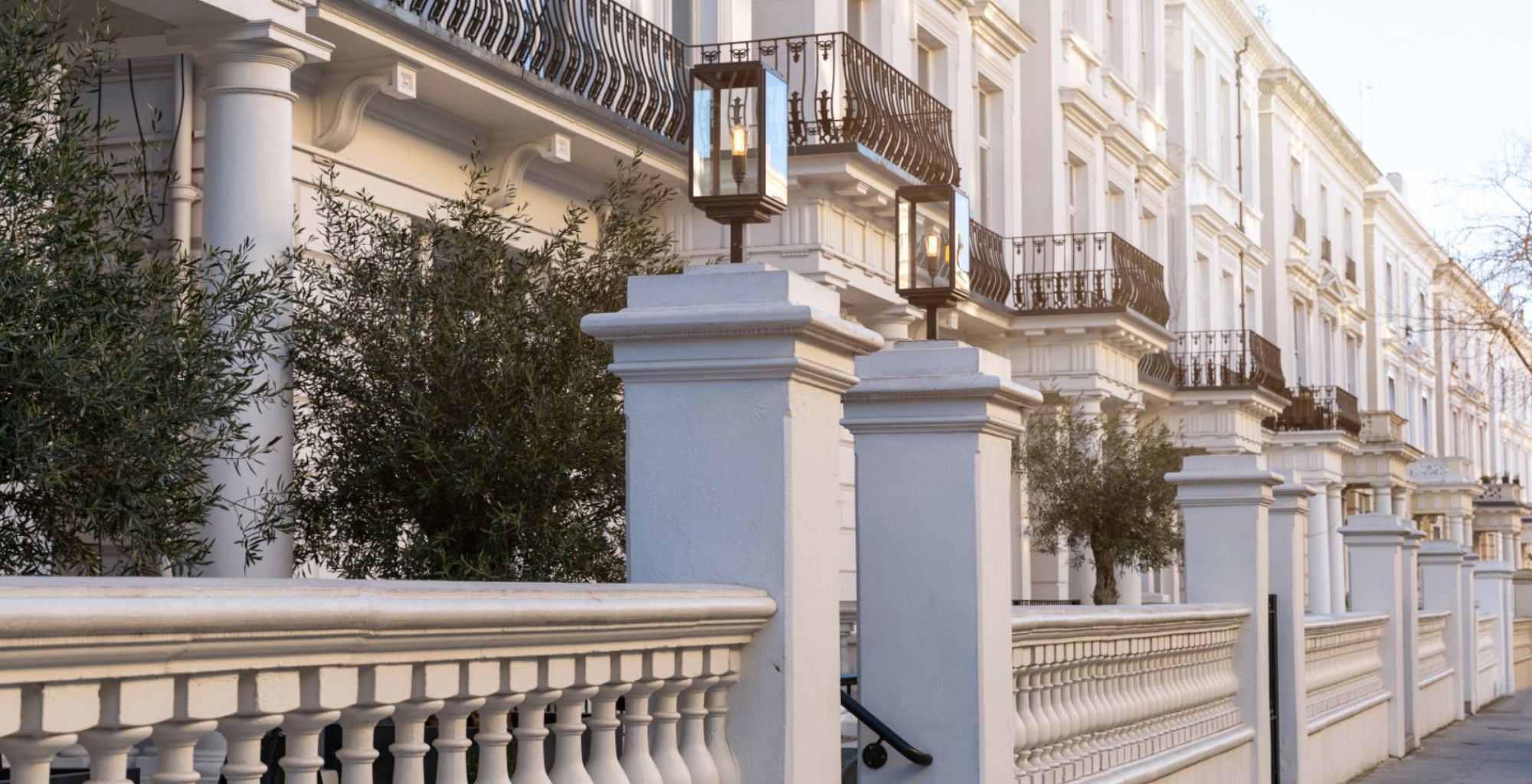
Georgian property | Behind the façade
One type of period home that continues to be highly sought-after by homeowners is Georgian property. From the symmetry typically found in Georgian architecture to the multi-pane windows, there are some key features that home buyers actively seek, and others seek to imitate with modern-day design.
There is something about a period property that stands the test of time, more so than its literal age. Be it the hundreds of years old fireplace or the sash windows opening out to the world, these homes are an insight into the past and stand among newer buildings.
Here, we have everything you need to know about Georgian homes, from their history to what to look for when buying one.
What is a Georgian property?
Constructed between 1714 and 1837 during the reigns of George I to George IV, Georgian homes are highly coveted in the UK property market. Far from being mere historical artefacts, these properties are distinguished by their architectural sophistication. The exteriors exhibit Palladian-inspired symmetry, featuring meticulously balanced windows and centralised doorways that contribute to a symbiotic facade.
Upon entering, you’re typically greeted by interiors that are equally compelling. Rooms are designed with precise proportions, often adhering to the golden ratio, enhancing spatial luxury. Moreover, the elegance of these homes is further highlighted by elements such as intricate cornices, classical columns and refined mouldings.
Esteemed architects like Sir Christopher Wren, Robert Adam and John Nash were instrumental in popularising this style, which has now become a top choice for homebuyers thanks to a blend of historical richness and aesthetic excellence.
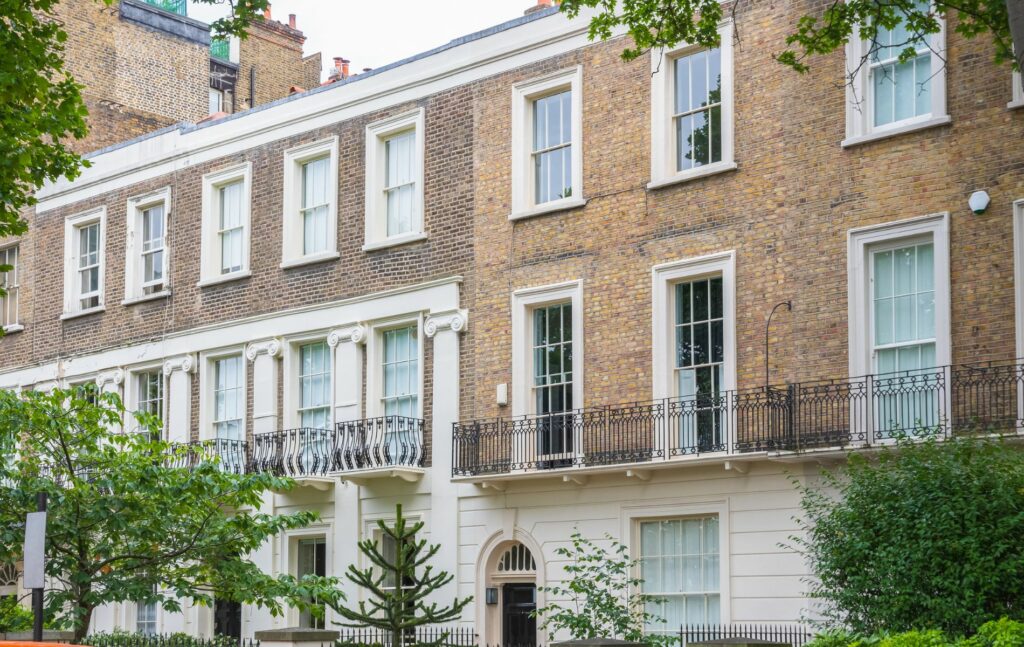
Understanding Georgian architecture
To fully appreciate Georgian architecture, you’ll need to understand why it’s the way it is, from historical context to key features.
Key features
Georgian architecture stands out for its balanced design, featuring a central doorway flanked by uniformly spaced windows. Multi-pane, sash windows were a hallmark of these homes, optimising both light intake and airflow. Unlike many modern homes, Georgian residences benefited from high ceilings and spacious rooms, lending an air of grandiosity and refinement. In terms of materials, brick and stone were frequently used, while stucco-fronted or rendered finishes added a touch of sophistication.
Where are Georgian homes most common?
Georgian homes are most commonly found in the United Kingdom, particularly in cities like London, Bath and Edinburgh. These architectural marvels also grace the streets of Dublin, Ireland.
There are several Georgian towns dotted across the UK.
Georgian vs Victorian architecture
Georgian and Victorian architectures are often juxtaposed, given their historical proximity. But they exhibit distinct stylistic nuances. For instance, Victorian buildings are characterised by their elaborate ornamentation, intricate detailing and bold colour schemes – they often reflect the era’s penchant for opulence and grandiosity.
In stark contrast, Georgian architecture offers a more restrained yet timeless elegance. It places a premium on simplicity, balance and proportion. Unlike the flamboyant Victorian style, Georgian architecture leans towards muted colour palettes and subtler detailing, always with an eye on upholding classical design principles.
Buying a Georgian property
Many Georgian buildings have survived two centuries or more and are often voted the ‘most architecturally desirable homes in the UK’, but there are some factors you should consider before purchasing a Georgian property.
Condition
When eyeing a Georgian property, don’t overlook the condition. Some may be in need of a modern makeover. So consider the additional financial outlay required to fix up a Georgian house if it needs it. This includes but is not limited to antiquated plumbing, updating electrical systems, and potentially putting in new baths and kitchens. There are also those charming original period features to consider, as they might need restoring to their former glory.
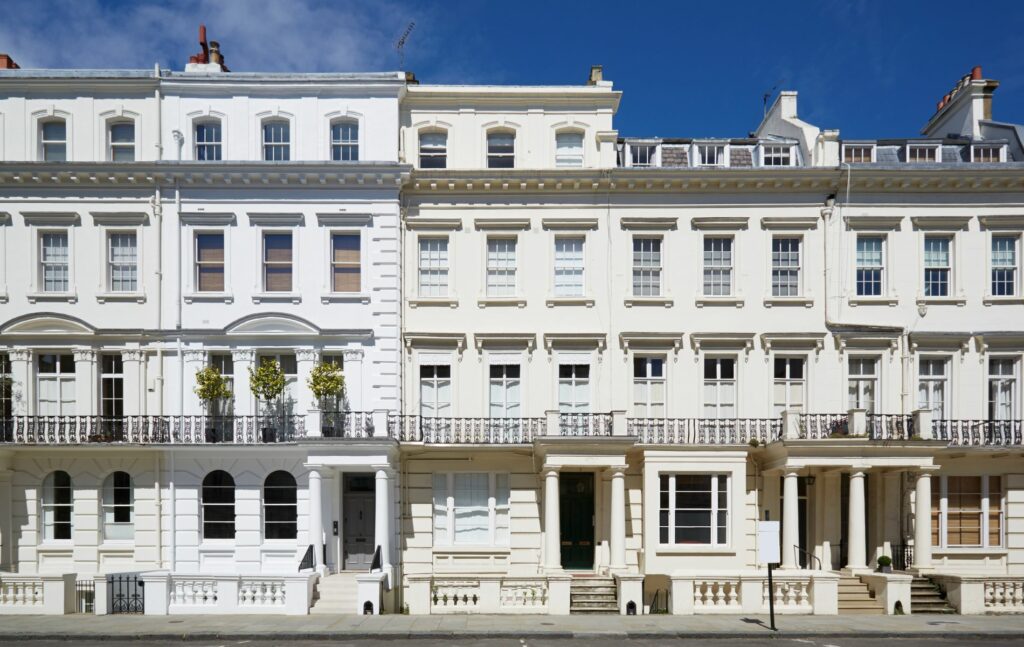
Location
The so-called great Georgian cities of the British Isles were Edinburgh, Bath, London, and York. Therefore, it’s still common to find a high concentration of these homes around these areas, there are also several Georgian towns.
Demand
Georgian homes are high in demand, so expect them to cost more than other properties in the area – especially if they’re three or four-bedroom houses. Georgian homes in large cities like London always command a premium, whereas the same types of property in other areas will, naturally, be more affordable.
Renovating a Georgian property
Embarking on the renovation of a Georgian property is both exhilarating and rewarding, yet it comes with its own set of complexities.
Conservation areas and planning permissions
When renovating a Georgian property in a conservation area, be aware of local regulations. These rules are more than just red tape – they’re designed to preserve the historical integrity of the locale, and yes, they can be stringent. From altering the building’s facade to contemplating an extension, you may find yourself facing planning permission issues.
Working closely with your local planning authority is important here. They’re your go-to resource for ensuring the renovation aligns with regulatory standards. They’ll clarify what’s permissible and what’s off-limits, and they can also offer insights on how to execute your renovation in a manner that respects the property’s historical significance.
Common renovation challenges
Renovating a Georgian property is not without its hurdles, especially when facing issues like dampness and plaster. These properties often feature robust walls, which complicates the diagnosis and treatment of damp-related problems. Collaborating with a specialist contractor will go a long way to solving issues.
Another aspect of Georgian renovation is the handling of cornicing and other period-specific features. These elements are often finely crafted and delicate. That means they require meticulous care during both removal and restoration. Moreover, any newly introduced features should blend seamlessly with the property’s original design ethos.
Choosing authentic decorations
When decorating a Georgian property, the devil is in the details, and authenticity is key. Take, for instance, the property’s large sash windows, which are often a standout feature. The window dressings you select – be it ornate curtains or classic shutters – should complement the look and feel while also elevating these windows.
Wallpaper selection is another aspect to consider. Opt for designs that resonate with the Georgian era and harmonise with the room’s existing features. While bold patterns and colours can indeed enrich the aesthetic of Georgian interiors, caution is advised to ensure they don’t overpower the space.
Finding a Georgian property
Georgian homes remain a standout property type and are highly sought after. Living in one is owning a slice of history, whether it’s a central London pad or one of the many rows of homes found in Bath, Edinburgh, Cheltenham, Holt or beyond.
